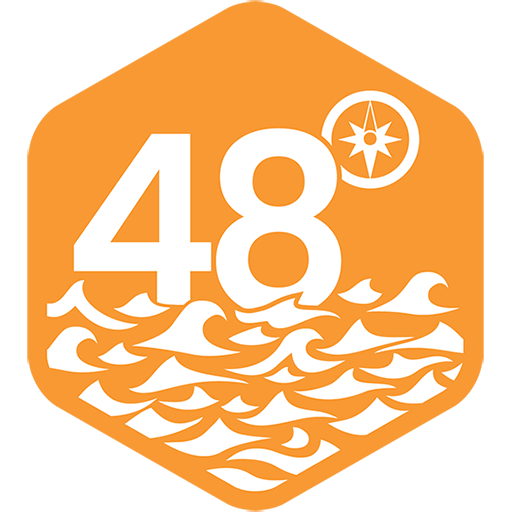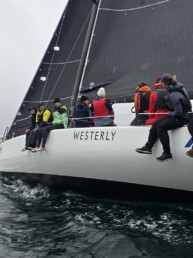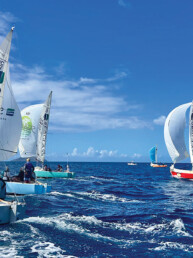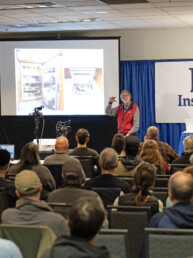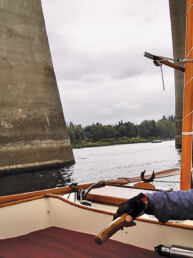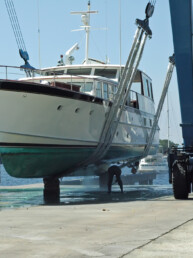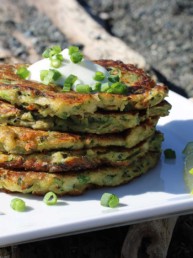People have always sailed,
across every corner of the world.
But somewhere along the way,
we traded cedar for canvas,
and in that shift, we turned our gaze away,
never to look back.
The secret lies in the strength
woven into the bark of cedar,
a mystery that time has held close.
– Guujaaw
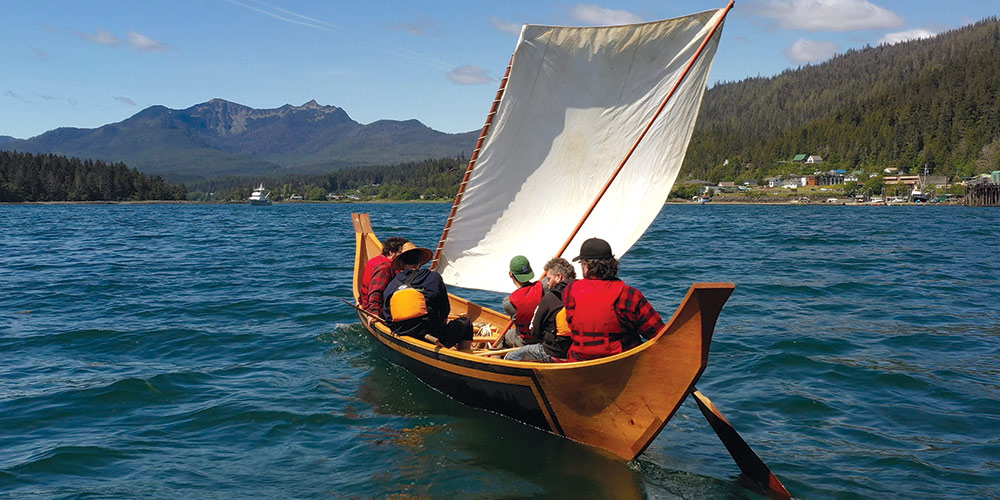
Before stories were told, we Haida sailed the Pacific Ocean and the turbulent waters of Hecate Strait, navigating our way from Haida Gwaii, west across the open ocean to Hawai’i and Japan, and south to California and beyond.
Our ancestors worked massive cedar trees into ocean-going canoes, carefully steaming and bending them to create vessels capable of long voyages. The sails—woven from the bark of cedar—were essential for harnessing the winds and carrying us to distant lands, where we traded, communicated, and forged relationships with other nations. These sails were more than tools of navigation; they were woven with the knowledge, wisdom, and spirit of our ancestors, carrying who we are and what we know across the wide Pacific Ocean.
The arrival of European colonization in the 18th century disrupted this connection, driving the passing of knowledge underground.
The cedar sails, once integral to travel and trade, were gradually replaced by European materials like canvas. Over time, the art of weaving cedar sails waned. Yet, the deep bond between ourselves and the ocean, and the knowledge of those who came before, remained.
In recent years, a group of artists, colleagues, and friends came together to awaken the Haida sail, not simply as an exercise in the craft of making but as a vital part of remembering who we are. Haida sail making represents a powerful reclamation of our sovereignty and a reaffirmation of our deep connection to the ocean. Led by weavers, carvers, and cultural knowledge keepers, this enquiry is a profound act of cultural restoration—a way to re-establish another aspect of our relationship with the sea and the land.
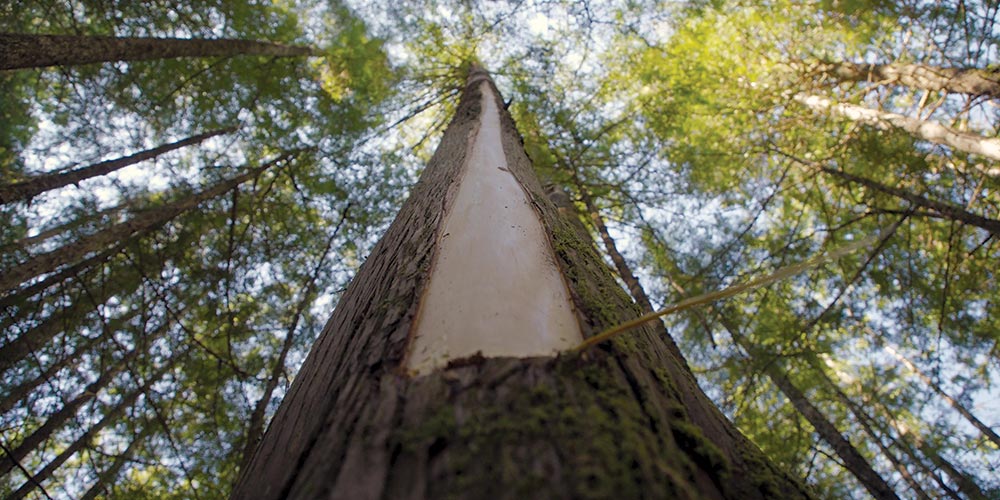
A Chance Encounter
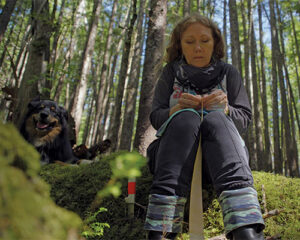
The resurgence of Haida sail making is more than a technical exercise; it is a reclamation. Paula Varnell, a member of the House of Haida Weavers, is one of the key figures in this effort. Together with her family of textile artists and carvers, she has embarked on a journey to weave the first Haida cedar sail in two centuries. This endeavor began with a vision rooted in oral histories, and a desire to reconnect with our ancestral ways.
Varnell’s teachings and artistic practice were passed down through matriarch, Ilskylas Delores Churchill, a 93-year-old weaver, who guided her through the old stories, the examination of historical weavings, and accounts of our ancestors’ voyages.
One of these stories tells of seal hunters who were swept out to sea by a storm and navigated to what is now known as the island of Hawai’i. Their cedar sails carried them across the ocean, and when they were welcomed by the Hawaiian people, it marked the beginning of a bond between the Haida and Hawaiians. This story, along with others from our oral traditions, forms the foundation of the current Haida sail making project, which bridges our past and present and strengthens our connection to other Indigenous peoples who share similar maritime histories.
In 2022, Paula visited Haida carver Jaalen Edenshaw’s workshop, where a canoe with mast holes was being finished—a rare and significant feature in modern Haida canoe construction. This sparked a conversation about recreating Haida sails, which has led to many cultural exchanges and collaborative ideas, locally and with weavers from Aotearoa (New Zealand) and Hawai’i. These communities, like ours, possess a wealth of knowledge about traditional sail making, and their expertise was invaluable in our effort to explore our local weaving materials and technology to create a sail.
“I’ve always seen the old photos of our canoes, with sails like wings, gliding through the water,” said carver and canoe-maker, Jaalen Edenshaw. “Even though I had never sailed before, I kept thinking about these images and the stories I had heard of the old timers sailing along the coast. So, when I built the canoe, I made mast holes. Hoping that one day they would be used.”
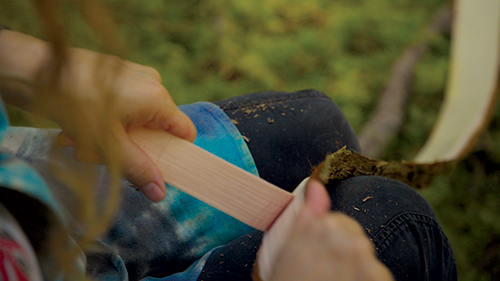
Listening to What We are Told
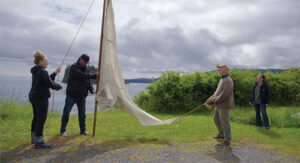
Our canoes, constructed from cedar, are a tangible representation of our long connection to the land and sea. Cedar is not merely a material; it is a living being, she is our sister and sacred to us. For centuries, cedar was used to create canoes, homes, clothing, baskets, and other goods. It is central to our worldview, embodying the interconnectedness of all things—plant, animal, and human.
Though much of the knowledge of cedar sail making was hidden, fragments have remained in oral history and the archival record. The Hudson’s Bay Company journals from 1831 mention the theft of a Haida canoe sail; and photographs from the 19th century, such as those taken by Richard Maynard, capture images of Haida canoes with sails made from European canvas. These records offer glimpses into the past but do not fully convey the techniques our ancestors employed in weaving cedar sails. For that, we turned to the oral histories of our people, like those shared by elder Stephen Brown, who described how our ancestors used sails, called gya’áangu in our northern Haida dialect, to travel the waters surrounding Haida Gwaii. These stories and the collective memory of our people guide us, and bring the art of sail making into our minds today.
Our Pacific Cousins
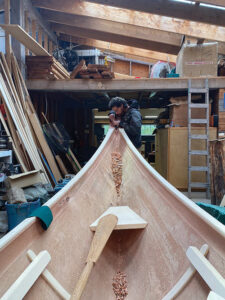
In the absence of a physical Haida sail, our weavers turned to our Pacific cousins—the Māori of Aotearoa and the Hawaiians of the Pacific Islands—for guidance. These communities, too, have a rich tradition of navigating the open ocean, and their knowledge of sail making has proved invaluable to us. Through cultural exchanges and visits to museums and workshops, we had the opportunity to study Pacific Island sails and learn their techniques for constructing sails using natural materials.
“Examining the many styles of sails at the Bishop Museum, the Burke Museum, and the Museum of New Zealand Te Papa Tongarewa, was very enlightening. I realized there are many techniques to create sails that can work within our own unique weather patterns, currents, and environment,” said weaver and painter, Evelyn Vanderhoop.
These exchanges were not only about the sharing of technical knowledge and techniques, but also about our shared history facing the impacts of colonization. This work is deep and connected and the restoration of traditional sail making is an act of solidarity.
Returning to Our Sister, Again and Again
At the heart of a Haida sail is the cedar tree. The cedar provides not only the material for the sail and the canoe but also a deeper, spiritual connection to our land. The act of weaving a cedar sail is an offering to the cedar tree and to the ocean, an expression of respect and gratitude for the sustenance it has provided the Haida for thousands of years. Just as our ancestors used sails to navigate and sustain our way of life, we now return to this practice as a reaffirmation of our commitment to the natural world. The cedar sail, woven with care and intention, is not just a tool; it is a ceremony—a living expression of our cultural identity.
As we bring this knowledge into our minds, we are reminded of our responsibilities as caretakers of the land and sea. The power of the wind that fills our sails is of a supernatural force that we must respect and balance with the rhythms of our behavior. Our renewed practice of ocean-going wayfinding is a reminder of our long relationship with the sea and the responsibility we bear to protect and honor it. Today when the health of the oceans is under threat, the resurgence of a cedar sail serves as both a symbol and a call to action. It reminds us that the vast ocean is not merely a resource to be exploited, but a sacred space to be honored—one that, like all relationships, is rooted in reciprocity and respect.

Toward the Horizon of Tomorrow
Our return to sail making is not a journey into the past; it is a path forward—a way of weaving together the wisdom of our dear ancestors and the aspirations of those to come.
As we continue to practice our culture and navigate the contradictions of the modern world, the vision of canoes adorned with cedar sails on the horizon represents a future where our sovereignty is rooted on the land and expressed through the practice of our seafaring ways. As our canoes once again catch the wind, carrying us across the waters of Haida Gwaii and beyond, we will look to the stars and be carried into the future on the wind of our ancestors.
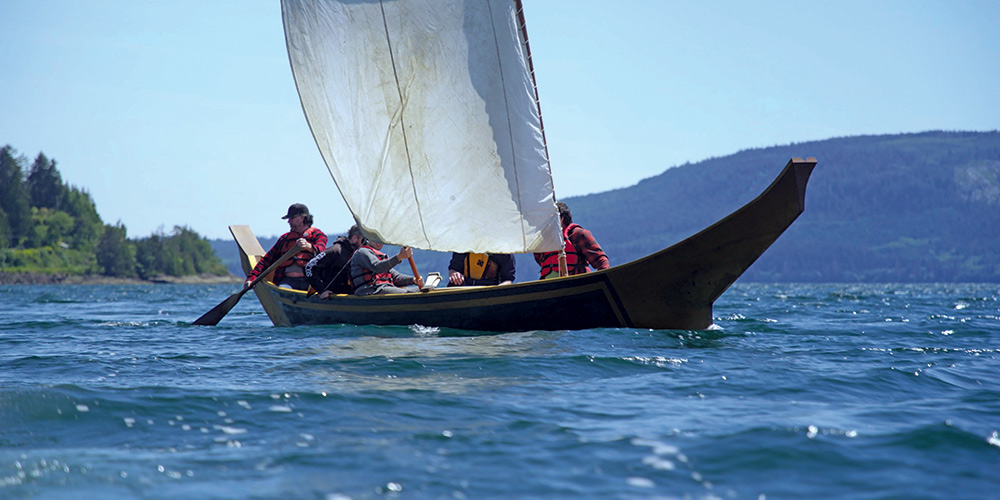
Learn more about Haida Sails and cedar sail making at www.haidasails.com
Northwest Maritime and 48° North are honored to be connected with the Haida Sails project. It exemplifies the importance of culture, craft, community, and our region’s millennias-old connection to wooden boats, sailing, and the sea.
